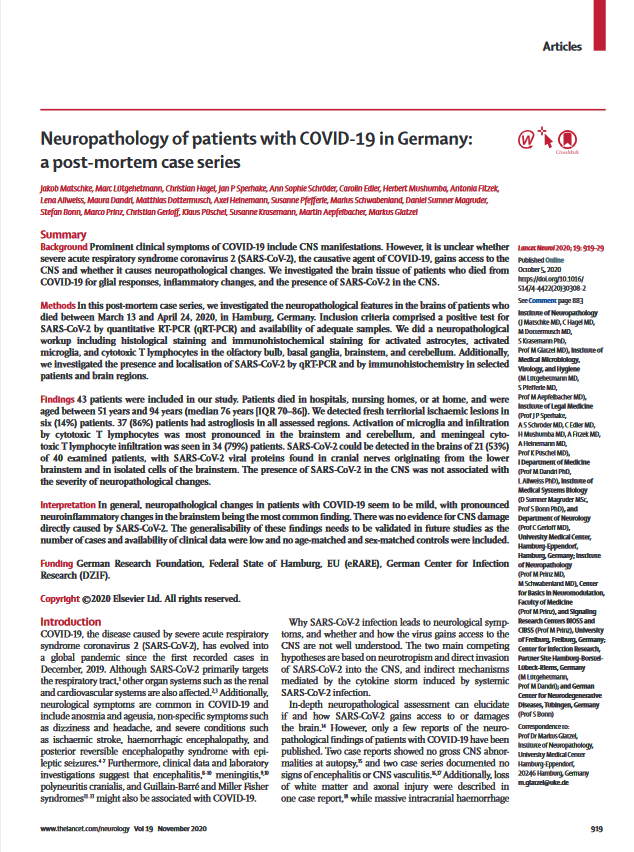08.11.2020
Neuropathology of patients with COVID-19 in Germany: a post-mortem case series
The Lancet, 2020
Prominent clinical symptoms of COVID-19 include CNS manifestations. However, it is unclear whether severe acute respiratory syndrome coronavirus 2 (SARS-CoV-2), the causative agent of COVID-19, gains access to the CNS and whether it causes neuropathological changes. Here, Matschke et al. investigated the brain tissue of patients who died from COVID-19 for glial responses, inflammatory changes, and the presence of SARS-CoV-2 in the CNS. The group detected fresh territorial ischaemic lesions in six (14%) patients. 37 (86%) patients had astrogliosis in all assessed regions. Activation of microglia and infiltration by cytotoxic T lymphocytes was most pronounced in the brainstem and cerebellum, and meningeal cytotoxic T lymphocyte infiltration was seen in 34 (79%) patients. SARS-CoV-2 could be detected in the brains of 21 (53%) of 40 examined patients, with SARS-CoV-2 viral proteins found in cranial nerves originating from the lower brainstem and in isolated cells of the brainstem. The presence of SARS-CoV-2 in the CNS was not associated with the severity of neuropathological changes. The authors found that, in general, neuropathological changes in patients with COVID-19 seem to be mild, with pronounced neuroinflammatory changes in the brainstem being the most common finding. There was no evidence for CNS damage directly caused by SARS-CoV-2. However Matschke and colleagues suggest to validate the generalisability of these findings in future studies as the number of cases and availability of clinical data were low and no age-matched and sex-matched controls were included.
SARS-CoV / SARS-CoV-2 (COVID-19) spike antibody [1A9] GTX632604 was used for immunohistochemical detection of SARS-CoV-2 spike protein.
>> View article


